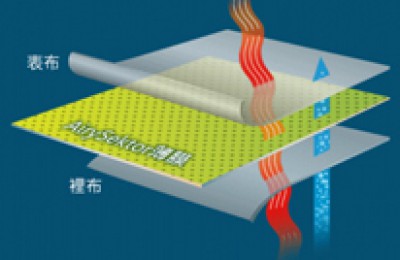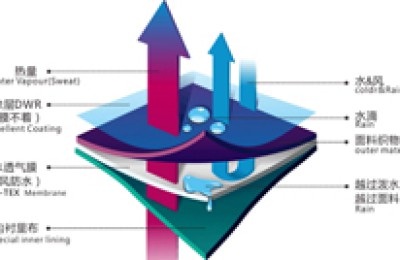my country’s foreign trade data for February recently released by the General Administration of Customs showed that in February, China’s total import and export value was 1.7 trillion yuan, an increase of 11.3%. Among them, exports were 1.04 trillion yuan, an increase of 48.9%; imports were 666.1 billion yuan, a decrease of 20.1%. Two sets of data, one up and one down, show that the external demand environment is generally getting warmer, but the performance of domestic demand is still poor.
Export growth is rising
Beyond market expectations
Exports in February increased significantly by 48.9% year-on-year, which greatly exceeded market expectations. Previously, the Bloomberg survey average was 14.8%, and UBS predicted 8.6%. Regarding this highest growth rate since June 2010, Tang Jianwei, a senior macro analyst and Liu Xuezhi, a researcher at the Bank of Communications Financial Research Center, said that it was “mainly affected by base factors and seasonal factors.” Due to the crackdown on false trade, export data shrank significantly in the first quarter of last year. Exports in February last year were US$114.1 billion, and the export growth rate was only -18.13%. The low base caused the export growth rate to rise sharply to 48.3% in February this year.
Analyzing historical export data shows that in the first quarter of each year, affected by seasonal factors during the Spring Festival holiday, foreign trade data fluctuates greatly, and export growth often fluctuates. Except for 2014, the export value in February showed a gradual growth trend, showing a certain linear pattern. If the low base effect is excluded, exports in February this year were at a normal positive growth level. “Exports from January to February this year totaled US$369.411 billion, with a year-on-year growth rate of double-digit growth of 15.1%. The sharp increase in export growth exceeded market expectations, indicating that the export situation has significantly improved.”
It is worth noting that from the perspective of trade methods and export commodity structure, the growth rate of general trade exports is faster than that of processing trade, and the export of major labor-intensive products has increased significantly. Tang Jianwei and Liu Xuezhi believe that this shows that the export structure has shown a certain degree of change, and the weak recovery of the global economy has driven the demand for labor-intensive products to pick up.
From the perspective of export trade, the export growth rate of general trade in February was as high as 87.4%, which was significantly higher than the export growth rate of 2.7% for processing trade with supplied materials and 12.3% for processing trade with imported materials. From the perspective of export commodity structure, the export growth rate of major labor-intensive products has rebounded significantly. It is calculated that the year-on-year growth rates of textiles, bags, clothing, footwear, furniture and lighting were as high as 99.1%, 120.4%, 99.4%, 89.9%, and 111.5% respectively. %, 150%. The growth rates of exports of high-tech products and mechanical and electrical products were significantly lower than those of labor-intensive products, at 15.3% and 38.8% respectively. Import growth continues to decline
Reflects that domestic demand remains weak
In February, my country imported 666.1 billion yuan, a decrease of 20.1%, the lowest growth rate since June 2009, and a month-on-month decrease of -22.6%. The year-on-year growth rate of imports has been negative for four consecutive months, and the decline has been expanding, causing the trade surplus to hit a new high.
The Financial Research Center of the Bank of Communications believes that the sharp fall in import prices is the main reason for the low import growth rate. Commodity prices continued to fall, with prices of major imported commodities falling sharply. It is estimated that the import prices of soybeans, iron ore and their concentrates, crude oil, and refined oil products all fell sharply year-on-year in February, by -19.4%, -45.3%, -51.6%, and -42.9% respectively, all of which were lower than in January. expanded.
UBS China analyzed that from January to February, mainland China’s imports from G3 economies turned from a year-on-year increase of 7% in December last year to a year-on-year decrease of 14%. Imports from other regions were also mostly weak: from ASEAN countries China’s imports fell by nearly 19% year-on-year, the total imports from Hong Kong, Taiwan and South Korea fell by 6% year-on-year (a year-on-year increase of 7.3% in December last year), and the total imports from bulk commodity producers such as Australia, Brazil, Russia and India fell year-on-year. , which expanded to nearly 33% from 18.4% in December last year.
At the same time, UBS China said that the import value and import volume of major imported products also fell mostly from January to February, indicating that domestic demand, especially investment demand, was overall weak.
International commodity prices continue to decline, lowering the import value of most products. Due to a high base and weak domestic demand, the year-on-year growth rate of imports of most raw materials and mechanical and electrical products has also deteriorated, such as iron ore ( From a year-on-year increase of 18% in December last year to a year-on-year decrease of 1%), copper mines (from a year-on-year increase of 12% to a year-on-year decrease of 6%), coal (a year-on-year decrease expanded from 23% to 45%), crude oil (a year-on-year increase Slowed down from 13% to 5%), steel (from flat to down 13% year-on-year) and copper (year-on-year decline widened from 5% to 24%). The trade surplus has hit new highs repeatedly, putting pressure on the appreciation of the RMB. Wang Tao, chief economist at UBS China, said that the divergence of import and export trends, coupled with improved trade conditions, pushed the foreign trade surplus to a new high of US$61 billion in February. She also said that the continued appreciation of the U.S. dollar against major currencies such as the euro and the Japanese yen, as well as the continued narrowing of domestic and foreign interest rate differentials, led to continuous capital outflows. Therefore, the RMB continued to depreciate against the U.S. dollar in February, but at a slower pace.
Will the continued appreciation of the effective exchange rate of the RMB against a basket of currencies weaken export competitiveness and thus affect growth prospects? Wang Tao said, of course it will, and it is expected that this impact will become increasingly obvious. But for now, Wang Tao said that although China’s export competitiveness has been weakened, China’s share in the G3 economies and the global trade market is still growing. In addition, political pressure from trading partners will still affect the central bank’s exchange rate policy.Since May last year, whenever the General Administration of Customs announces a relatively large foreign trade surplus, the central bank will promote the appreciation of the central parity of the RMB accordingly. “In the final analysis, compared with exchange rate policies, we believe that other policies such as fiscal support and other policies that are conducive to growth Reform measures are now more effective in buffering the drag on the economy caused by the decline in real estate.”
Haitong Securities believes that the foreign trade surplus once again hit a record high in February, which will help alleviate capital outflows. However, the US dollar index hit a new high and domestic interest rate cuts caused the RMB to depreciate, which may intensify the outflow of hot money. High currency interest rates are harmful to the economy, so another RRR cut is urgently needed.
Lian Ping, chief economist of the Bank of Communications, also said that import growth has been negative for four consecutive months, causing the trade surplus to reach new highs, exceeding US$60 billion for two consecutive months. This has brought pressure for RMB appreciation and will ease the impact of interest rate cuts. The expected depreciation in the future will expand the space for monetary policy control.
Yi Gang, deputy governor of the People’s Bank of China, said during the two sessions that the RMB is currently the strongest currency after the U.S. dollar and the RMB exchange rate can remain basically stable. The reason is that China’s economic growth is still relatively fast, China’s trade surplus is still large, and the internationalization of the RMB is accelerating. Haitong Securities said that the central bank’s stance, coupled with the rebound in exports and the expansion of surplus, will help stabilize exchange rate expectations, and the extent of RMB depreciation may be limited. Taking into account that the U.S. economic recovery continues, the countdown to interest rate hikes enters, and the economies of other countries maintain low growth, but the risk of deflation intensifies, Haitong Securities predicts that export growth in March will be 26%, import growth will be -15%, and a surplus of US$76.4 billion.
Wang Yaoji, deputy director of the Securities Research Institute of Fudan University, said in an interview with reporters that my country’s export volume increased by 48.9% year-on-year in February. Even after deducting the base and seasonal factors, it was significantly better than market expectations. This is not only a step towards completing this year’s export target Laying a better foundation will also help reduce the pressure of macroeconomic downturn. Wang Yaoji pointed out that it must be noted that while labor costs are still on the rise, many export companies, especially small and medium-sized export companies, have very thin profits and face many operating difficulties. Management should further strengthen export tax rebates and increase export credits. and other measures to support exports, in particular to encourage enterprises to continuously increase the added value of export products and gradually optimize the structure of export products.





